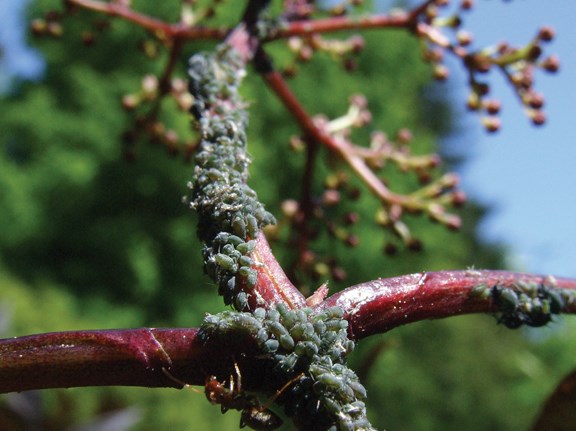When choosing new plants for the garden many people worry about how much maintenance they'll require.
Most trees, shrubs and perennials require very little care if they're chosen for the garden's conditions and placed far enough apart to avoid crowding themselves or other plants. Some plants require higher maintenance as a function of their purpose in the garden. For example, bananas, tree palms and summer annuals are tender plants grown solely for seasonal display and thus require more maintenance than a rhododendron or juniper.
The amount of maintenance required for any plant is also affected by placement within the context of the garden's structures and topography. For instance, a magnolia tree planted next to the house or under a power line will require ongoing pruning. In contrast, planting a magnolia tree out in the middle of the yard away from overhead obstructions and the house eliminates most of the pruning maintenance during the tree's lifetime. The most common planting mistake people make is to plant something too large or vigorous for its allotted space. Therefore, choose and place plants based on what their mature size will be in 10 or 15 years, depending on your time horizon, and place the plant where it can grow without requiring pruning or other maintenance inputs. Unfortunately there are some plants that are desirable but they require ongoing maintenance due to their vigour and ability to colonize their environment and special precautions are required to work with such plants.
Here's a list of plants that should never be planted in the garden and others that require special installation techniques.
Plants that should never be planted in the garden: Gaultheria shallon, commonly known as salal, is one of the most invasive plants known to gardeners. It does have uses in the garden for specific areas only, like in enclosed planting beds, which will prevent expansion of the invasive root system. Salal can be used as groundcover but only in large areas where the interface with other plants is limited. Otherwise, salal will invade and crowd out all other ornamentals.
Rubus spectabilis, colloquially known as salmonberry, is exceptionally invasive and colonizes through the growth of underground stolons that can grow out one metre in length from the parent plant. There is no use in gardens for this highly invasive plant even though the berries are quite tasty. Salmonberry is best left planted in the wild to colonize river banks and forest edges.
Sambucus racemosa, which can be used to make elderberry wine, is commonly called red elderberry. Elderberry is not overly invasive but it does suffer from chronic black aphid infestation in spring when it's planted in residential settings. And those aphids will readily spread onto nearby garden plants making Sambucus untenable for gardeners.
Spiraea douglasii is aptly named as hardhack by everyone who has had to hack it out of the garden. Invasive, tough and resistant to every control technique - except excavation machinery - it should never be planted in residential gardens unless you want to spend your days hacking it out of the garden.
Athyrium filix-femina, or the lady fern, is somewhat charming but it spreads by spores and rhizomes so it should not be planted in the garden unless you want many of them. There are many other non-native ferns that are far more beautiful and less trouble to maintain.
Plants that require special precautions at planting time: Periwinkle, cotoneaster, day lilies, montbretia, Japanese spurge, St. John's Wort, lily of the valley (Convallaria majalis) and false lily-of-the-valley (Maianthemum dilatatum) can be planted in the garden but containment is required to prevent the spread of their underground root system.
The running types of bamboo versus the nonspreading clumping types of bamboo can also be planted in the garden but containment is required to prevent the spread of underground root systems. For running types of bamboo use galvanized sheet metal buried at least 60-75 centimetres deep in the soil as a containment to confine their spreading rhizomes. For all of the other plants mentioned, use plastic lawn edging buried at least 20-25 centimetres deep in the soil to control their spread. Install both barrier types into a pre-dug trench so the barrier sits vertical in the soil with one inch of the barrier sitting above grade to prevent spread of root systems over the surface. This technique will contain those plants to a pre-defined space in the garden by preventing the spread of underground stolons and rhizomes. Other plants that should never be planted anywhere include English Ivy (Hedera helix), goutweed (Aegopodium podagraria), yellow archangel (Lamium galeobdolon) and deadnettle or creeping lamium (Lamium maculatum). Those plants are simply too invasive, have low beauty value and are not worth the trouble they bring to the future of the garden.
Todd Major is a journeyman horticulturist, garden designer and builder, teacher and organic advocate. [email protected]



